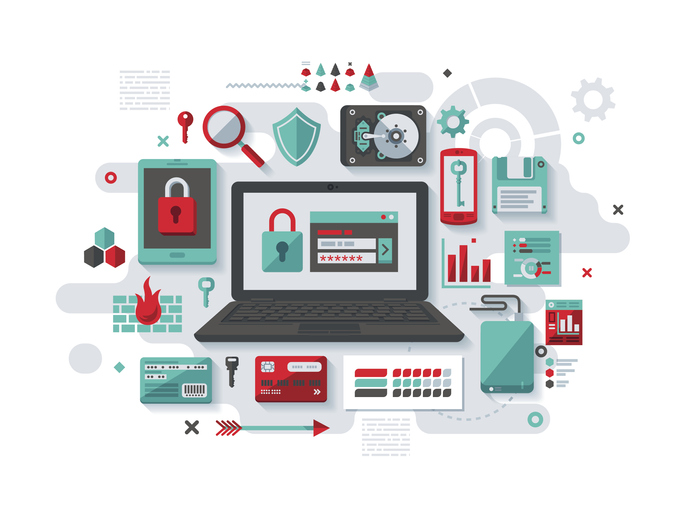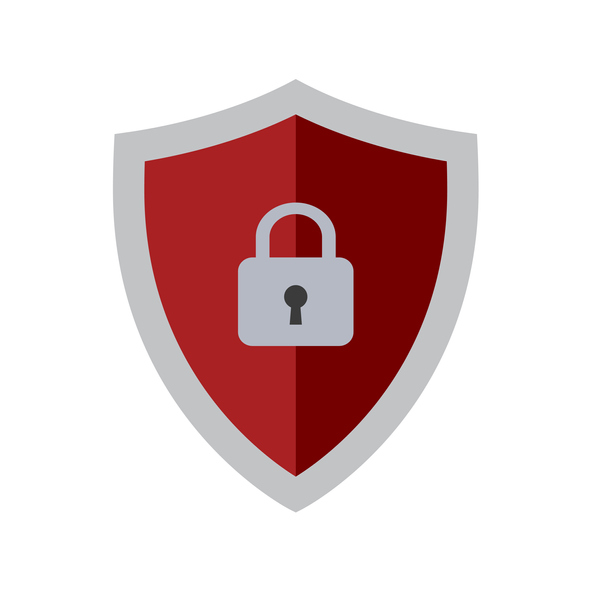Your Information Is Safe With Us. The Data Center will never sell, rent, share or distribute your personal details with anyone. In addition, we will never spam you.

Having the right cybersecurity technology is just a part of doing business in today’s world.
In fact, security solutions like firewalls and antivirus software accounted for $23 billion in annual revenue – it’s likely that you contributed to that in some small way.
But are they really worth your money?
There’s no disputing the need for an effective firewall or antivirus solution, regardless of the size or specialty of the business in question.
But, given that they are such a standard in the business setting today, have you ever stopped to figure out what you’re paying for?
What is a Firewall?
Your firewall is your first line of defense for keeping your information safe. A firewall is a particular type of solution that maintains the security of your network. It blocks unauthorized users from gaining access to your data. Firewalls are deployed via hardware, software, or a combination of the two.
A firewall inspects and filters incoming and outgoing data in the following ways:
What about Antivirus?
 Antivirus software is used in conjunction with a firewall to provide defense against malware, adware, and spyware. Each of these cybercriminal tactics has the potential to do immense damage to internal processes and a company’s reputation. The job of antivirus software is to spot, block, and isolate intrusive, malicious applications so they can’t do damage to your data and legitimate software.
Antivirus software is used in conjunction with a firewall to provide defense against malware, adware, and spyware. Each of these cybercriminal tactics has the potential to do immense damage to internal processes and a company’s reputation. The job of antivirus software is to spot, block, and isolate intrusive, malicious applications so they can’t do damage to your data and legitimate software.
Antivirus is installed to protect at the user level, known as endpoint protection, and is designed to detect and block a virus or malware from taking root on a user’s computer, or worse, accessing a network to which the user is connected.
If a user encounters a threat, the antivirus software detects the threat and blocks it using a string of text – an algorithm – that recognizes it as a known virus. The virus file tries to take one action or sequence of actions, known to the antivirus software, and the algorithm recognizes this behavior and prompts the user to take action against suspicious behavior.
Is this type of cybersecurity software effective?
Short answer?
To an extent.
Sorry for the underwhelming answer, but it’s a bit of a difficult question to answer.
A next-generation firewall and up to date antivirus solution are great at doing specifically what they’re designed for.
The problem is that they are not the end-all, be-all of cybersecurity in the modern world.
You could have the best firewall and antivirus software on hand, and still be vulnerable in any number of other ways…
The top 8 ways that cybercriminals get around firewalls and antivirus
Cybercriminals target your employees.
As important as cybersecurity technology is, on its own, it simply isn’t enough. The key to truly comprehensive cybersecurity is simple, yet often overlooked: the user.
Cybersecurity gimmicks — such as “set it and forget it” firewalls and antivirus software — fail to account for how important the user is.
Even the most effective digital security measures can be negated by simple human error, which is why conventional solutions are simply not enough to make sure you’re safe.
Much of cybersecurity is dependent on the user, and as such it’s vital that you properly educate your employees in safe conduct.
The more your workforce knows about the security measures you have in place and how they can contribute to cybersecurity, the more confidently they can use the technology is a secure manner.
Well trained employees become a part of cybersecurity, and are capable of:

Cybercriminals target your offsite devices, outside of business hours.
This is a critical limitation of your cybersecurity software, and it’s obvious when you think about it – if your firewall is only installed on your work devices, but you let employees use personal devices and home workstations to access business data, then obviously you won’t be totally secure.
In addition to having a detailed Acceptable Use policy in place at the office to stop your staff from using work devices to use unauthorized software and visit dangerous websites, you also need a mobile device policy in place to protect your data that may be on personal devices.
The right monitoring software for mobile devices will protect you from a number of dangerous scenarios, including:
Cybercriminals figure out your passwords – because your passwords are weak.
Users, both at home and at work, tend to be horrible at selecting and maintaining strong passwords.
Did you know, for instance, that 81% of data breaches in 2017 came down to stolen and/or weak passwords?
Are you confident in your password strength?
Find out for sure by reviewing these common password mistakes:
Keep these tips in mind when setting your passwords:
Cybercriminals penetrate your unpatched, out of date networks.
Did you know that one of the most common ways that cybercriminals get into a network is through loopholes in popular software, applications, and programs?
Despite how advanced modern software is, it is still designed by humans, and the fact is that humans make mistakes. Due to this, much of the software you rely on to get work done every day could have flaws — or “exploits” — that leave you vulnerable to security breaches.
Many of the most common malware and viruses used by cybercriminals today are based on exploiting those programming flaws; to address this, developers regularly release software patches and updates to fix those flaws and protect the users.
This is why it’s imperative that you keep your applications and systems up to date.
Unfortunately, most users find updates to be tedious and time-consuming and often opt to just click “Remind Me Later” instead of sitting through an often-inconvenient update process.
Comprehensive and regular patch management is a crucial part of proper IT security. Some of the worst data breaches are based on “zero-day exploits”, which are based on exploits found by hackers but not by the developers, leading to severe security risks and an immediate need for patching.

Cybercriminals target data that hasn’t been backed up.
Do you have a data backup policy in place?
If not, then you’re vulnerable, right now, to ransomware.
Ransomware has quickly become one of the biggest cyber threats to businesses today – remember the Wanna Cry epidemic that infected hundreds of thousands of IT systems in more 150 countries?
That was ransomware, and it could happen to you too. Unless that is, you get a data backup solution put in place.
If you have you have a data backup solution, then it doesn’t matter if your data has been encrypted. You can just replace it with your backup, simple as that.
That’s why you should make a considerable investment in a comprehensive backup data recovery solution so that you can restore your data at a moment’s notice when necessary.
Be sure to:
Cybercriminals trick your staff into installing dangerous software.
One of the most popular cybercrime tactics is to trick users into downloading malware, under the assumption it’s a type of software they need.
This could be hidden in a large downloaded file that users may think is a work program, a video game, or even a mobile app.
This is further reason why you need an Acceptable Use policy and content filter in place on work devices. These types of measures will protect you against your unsuspecting employees.
Cybercriminals trick your staff with phishing emails.
A popular cybercrime tactic among hackers today is “phishing” – a method in which they send fraudulent emails that appear to be from reputable sources in order to get recipients to reveal sensitive information and execute significant financial transfers.
It’s more effective than you might assume. That’s why the rate of phishing attacks increased by 65% in recent years – businesses keep making it easy for cybercriminals to get away with.
Share these key tips with your employees to make sure they know how to spot a phishing attempt:
Cybercriminals cut out the middle man and pretend to be you.
With the amount of personal data that people put online today, it’s not as difficult for cybercriminals to impersonate you as you might think.
By mining your social media, your LinkedIn and your company website, it can be pretty easy for a hacker to figure out your email address and reset your password.
Or maybe instead they spoof your email address and use it to contact a subordinate or a business contact to gain further information and access to use against you.
Put simply?
You need to protect yourself as a matter of privacy, and with the right processes:
Are your firewall and antivirus worth the money?
Yes.
Security software is a vital part of your cybersecurity – but the key word in that statement is part.
You should definitely invest in the usual cybersecurity solutions, but they are not enough on their own. Cybercriminals have so many tactics and methods for penetrating an organization like yours that you can’t settle for defending yourself on one front alone.
That’s why you need a comprehensive defense, that combines cybersecurity solutions, employee training, best practices, and detailed policies.
Anything less and you will have left a gap in your armor, making only a matter of time before cybercriminals find their way in.